Course in Buddhist Reasoning and Debate (2017-19)
Teachings on The Course in Buddhist Reasoning and Debate: An Asian Approach to Analytical Thinking Drawn from Indian and Tibetan Sources by Daniel Perdue given at Sravasti Abbey.

The Buddhist enthymeme
Reviewing “Unpacking the Buddhist Enthymeme” in Chapter 6 and examining real-life syllogisms sent in by students.
View Post
Practice syllogisms
Leading the class in analyzing practice syllogisms written by students.
View Post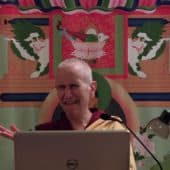
Valid syllogisms
Going over practice syllogisms and teaching on Chapter 7 on the two types of valid syllogisms.
View Post
Three types of correct signs
Covering Chapter 8 on “The Three Types of Correct Signs” - effect, nature, and non-observation.
View Post
Correct signs practice and review
Sharing practice signs sent in by students and starting on Chapter 9 on “Basic Buddhist Ontology I.”
View Post
Outline of the selfless
Continuing Chapter 9 “Basic Buddhist Ontology” and reviewing the outline of the selfless, which includes definitions, divisions, and examples.
View Post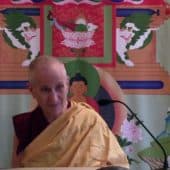
Divisions of the selfless
Teaching on the divisions of the selfless, after a lively discussion about syllogisms created by the community.
View Post
The benefits of the study of Dudra
An introduction to Dudra, a branch of Buddhist philosophy.
View Post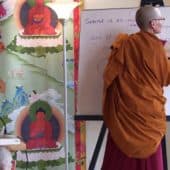
Review: Chapters 7-8
Venerable Tenzin Tsepal leads a review of Chapters 7 and 8, and begins going through the divisions of the selfless in Chapter 9.
View Post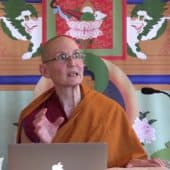
The equivalents of existents
Venerable Tenzin Tsepal teaches on the seven equivalents of the term existent, and engages the class in debate practice to help memorize their definitions.
View Post
Impermanent and permanent phenomena
Venerable Tenzin Tsepal teaches on the first division existents into permanent and impermanent phenomena.
View Post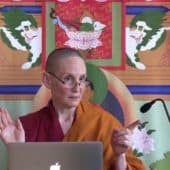
Permanent phenomena and functioning things
Venerable Tenzin Tsepal continues in Chapter 10, covering Examples of Permanent Phenomena and Functioning Things.
View Post